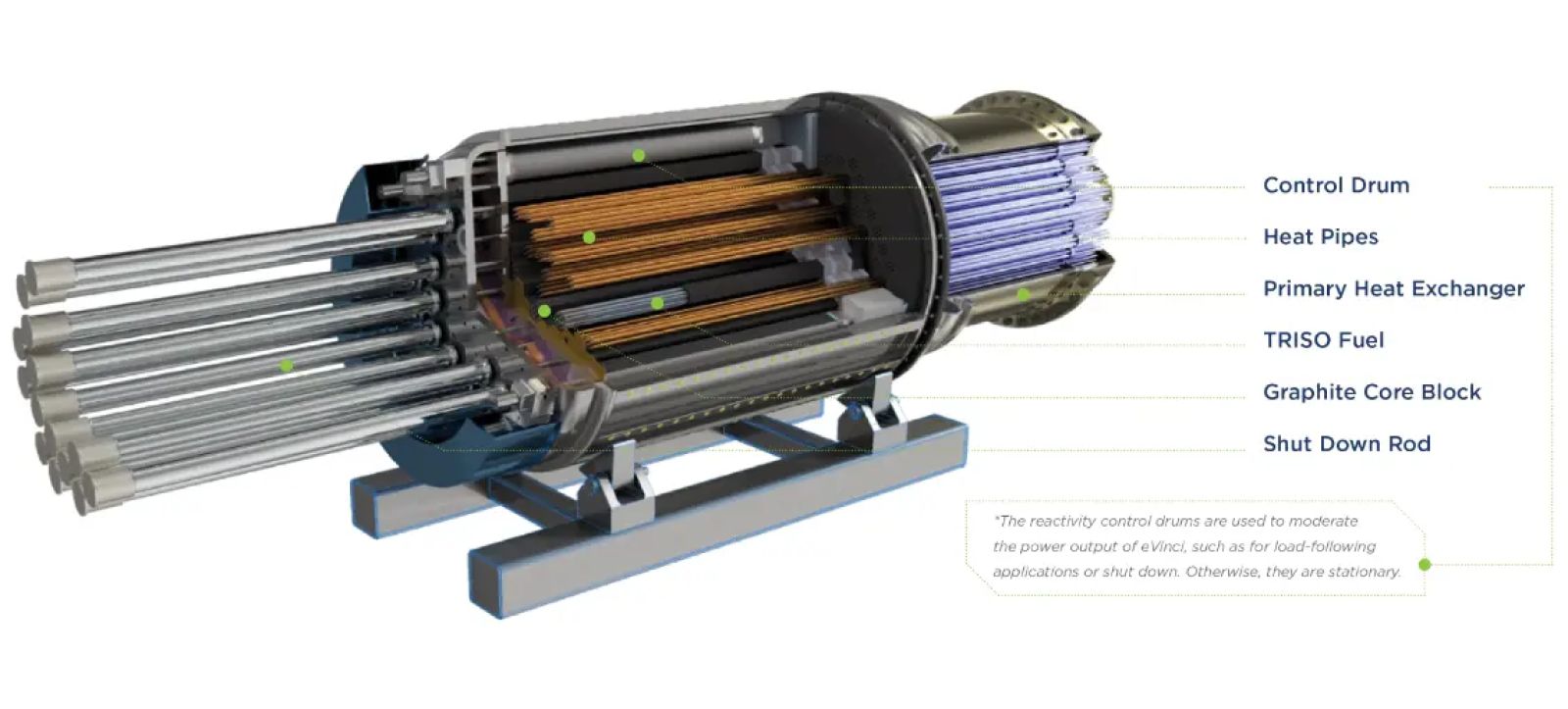This portable nuclear reactor can generate 5 megawatts continuously for 8 years
Published by Cédric,
Article author: Cédric DEPOND
Source: Westinghouse Nuclear
Other Languages: FR, DE, ES, PT
Article author: Cédric DEPOND
Source: Westinghouse Nuclear
Other Languages: FR, DE, ES, PT
Follow us on Google News (click on ☆)
The eVinci, a micro nuclear reactor designed by Westinghouse, raises as many hopes as questions. A true revolution in a sector undergoing an energy transition.

With a diameter of only three meters (approx. 10 feet), eVinci is capable of generating five megawatts of electricity. This reactor could operate continuously for eight years before requiring replacement or refueling.
Designed for easy transport, the micro-module reactor can adapt to various uses, ranging from military bases and data centers to remote rural or industrial areas. Westinghouse promises quick installation thanks to its factory-built assembly, an innovative approach that reduces construction costs and simplifies deployment procedures. This process also ensures better quality control, minimizing the risk of human errors during on-site installation.
One of the major strengths is the absence of moving parts, a key benefit in terms of reliability and maintenance. Indeed, its operation relies on a particular nuclear fuel: TRISO. This fuel is encapsulated in extremely resilient spheres, thus reducing the risk of leaks or uncontrolled reactions. This innovation could make nuclear energy safer. The cooling system does not require water, an advantage for areas where this resource is scarce.
Despite these technological promises, the question of safety remains unresolved. In case of a failure, will the rotating drum designed to stop the reaction be sufficient? This is a concern for some experts.
The first installations are planned for 2029, notably in Saskatchewan, Canada. If all goes as expected, eVinci could revolutionize energy access in hard-to-reach regions.
How does the passive cooling system of eVinci microreactors work?
The passive cooling system of eVinci microreactors relies on the use of alkali metal heat pipes. These tubes contain alkali metals capable of absorbing and transporting the heat generated by the reactor core. Unlike conventional reactors, this process does not require water or pumps.
The heat pipes exploit the phase changes of the metal. When heated, the alkali metal changes from a solid to a liquid state, absorbing energy. Then, this heat is redistributed and transformed into electricity outside the reactor, while maintaining a stable temperature in the core.
This passive approach presents several advantages: it reduces the risk of mechanical failure, minimizes maintenance needs, and offers a safe solution for areas where water is scarce or inaccessible.
What is TRISO and why is it crucial for microreactors?
TRISO, or TRi-structural ISOtropic, is a type of nuclear fuel designed for maximum safety. Unlike traditional fuels, each uranium particle is surrounded by three protective layers: porous carbon, pyrolytic carbon, and silicon carbide. These layers prevent the release of radioactive materials.
TRISO is particularly important for reactors like eVinci because it is extremely resistant to heat, corrosion, and high pressure. This enables the reactor to operate safely, even in extreme environments and without requiring complex cooling systems, such as those that use water.
Finally, this type of fuel is self-limiting. This means that even if the temperature rises, the nuclear reaction naturally slows down, drastically reducing the risk of runaway reactions. It's this feature that makes TRISO reactors so safe and appealing for installations in remote or sensitive areas.